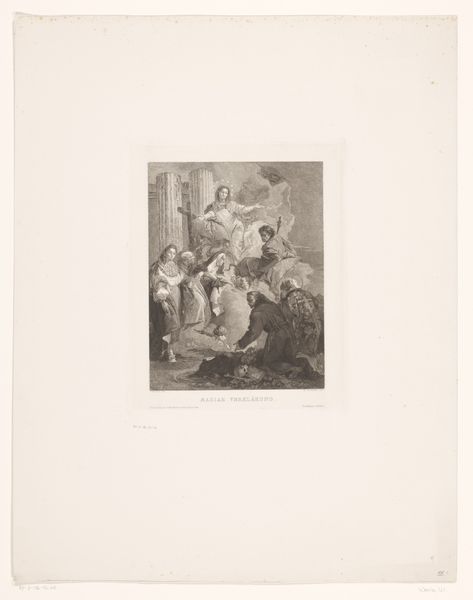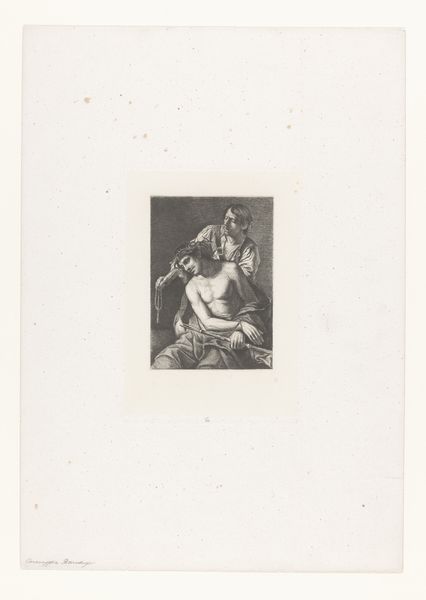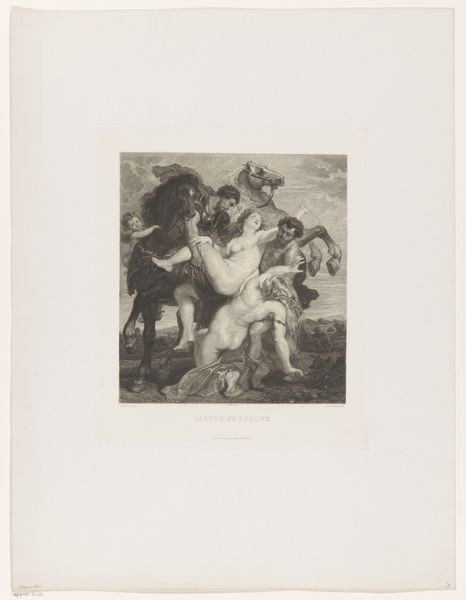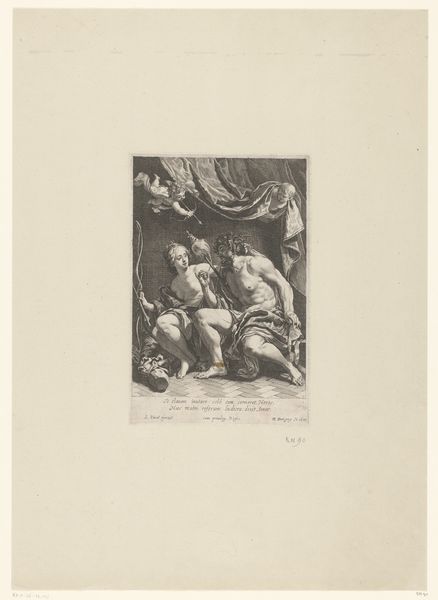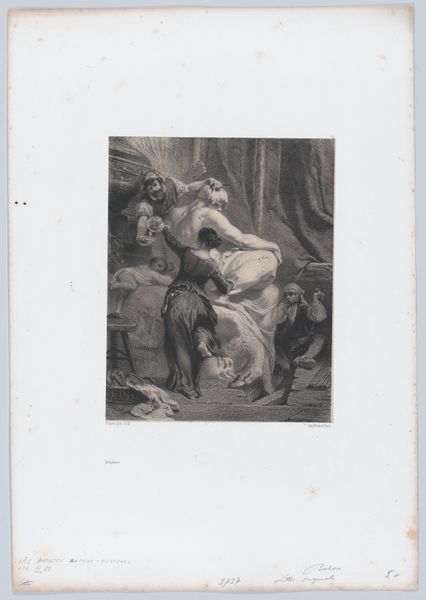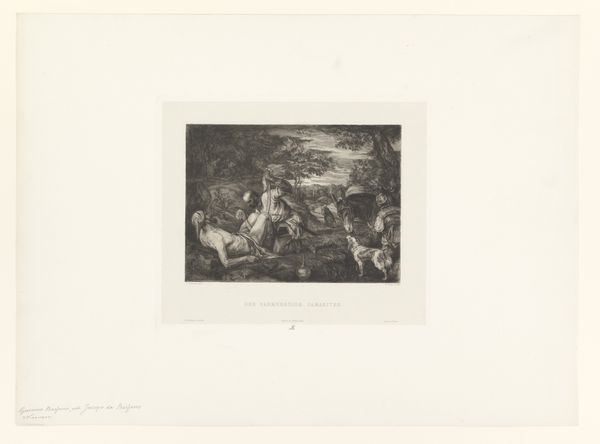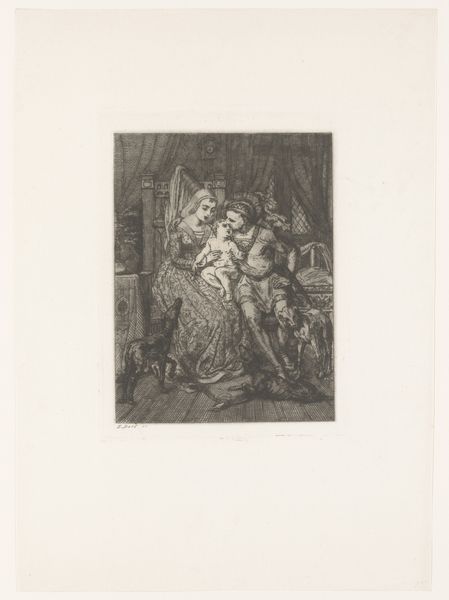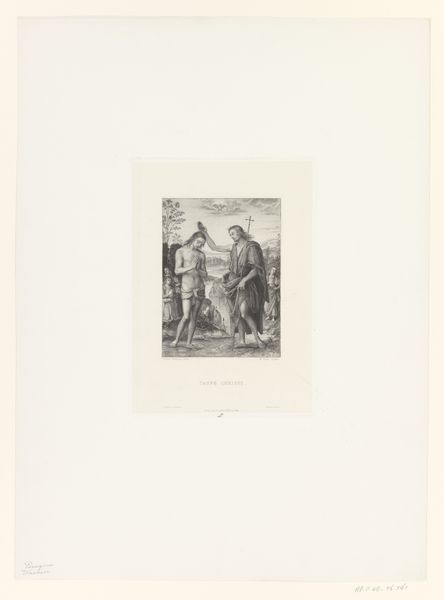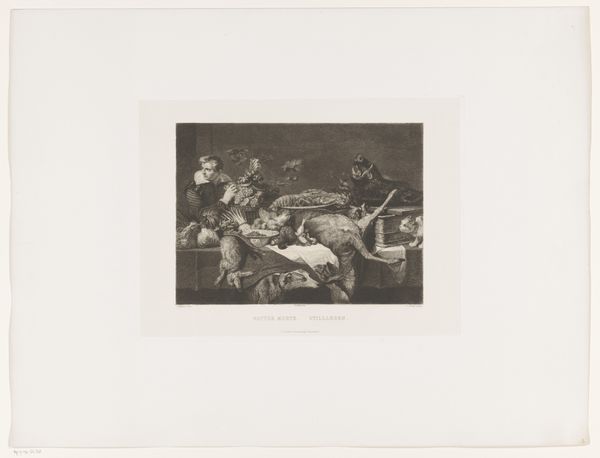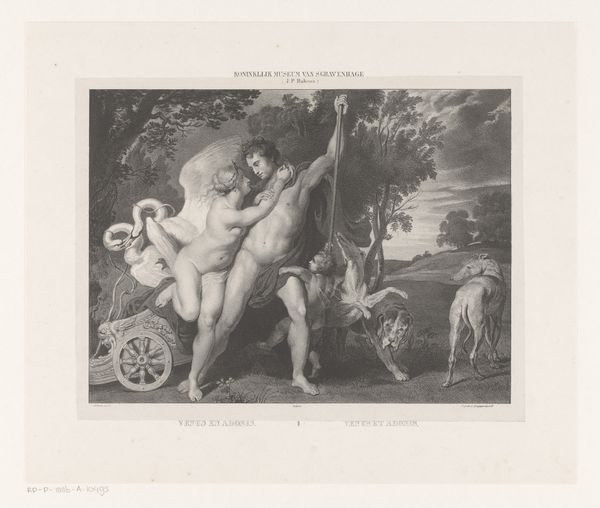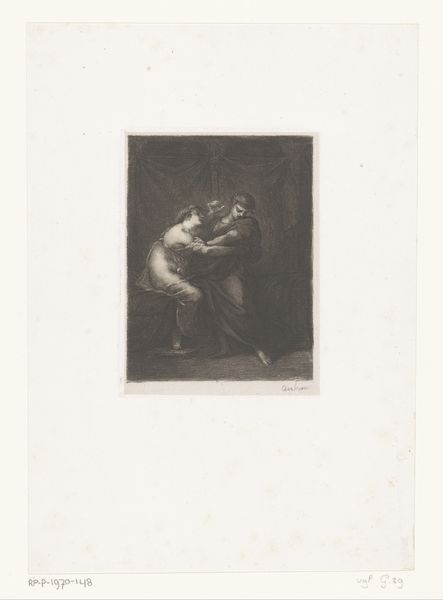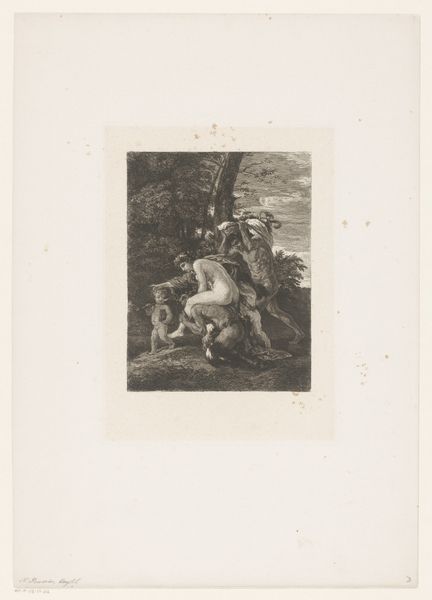
Dimensions: height 314 mm, width 285 mm
Copyright: Rijks Museum: Open Domain
Editor: This is "Boreas en Oreithyia" by Johannes Sonnenleiter, a print made sometime between 1835 and 1904. The image is so striking; it depicts this dramatic abduction scene in an old engraving style. How should we read into it? Curator: Considering the means of production is key here. This isn't just a representation of a myth, but the result of laborious craft. Look at the fine lines achieved through engraving, think about the artisanal skill required, and what impact the rise of printmaking had on access to images, particularly classical allegories such as this one. Editor: So, instead of focusing on the myth itself, you're drawn to how the image was actually made and disseminated? The labor involved? Curator: Precisely! The very *materiality* of the print, the paper it’s on, the ink used, all speak to a specific moment in production and consumption of art. Engravings democratized art, making such images available beyond the elite. What social narratives were told through this reproduction process? What does this image say about 19th century labor and material culture? Editor: I hadn't considered it that way. It’s fascinating to think about this dramatic scene being reproduced on a mass scale, altering the accessibility and, perhaps, even the understanding of classical themes for ordinary people. Curator: It asks us to look beyond the subject of the print to the hands and tools that brought it into being, and the society that consumed it. It's not just about the wind god and a nymph; it's about the machinery of image-making. Editor: This has given me a whole new perspective to consider, thank you. I always just looked at the stories. Curator: Looking at the labor and process unlocks new perspectives, doesn’t it? Now you see art not just as a picture, but as a physical record.
Comments
No comments
Be the first to comment and join the conversation on the ultimate creative platform.
